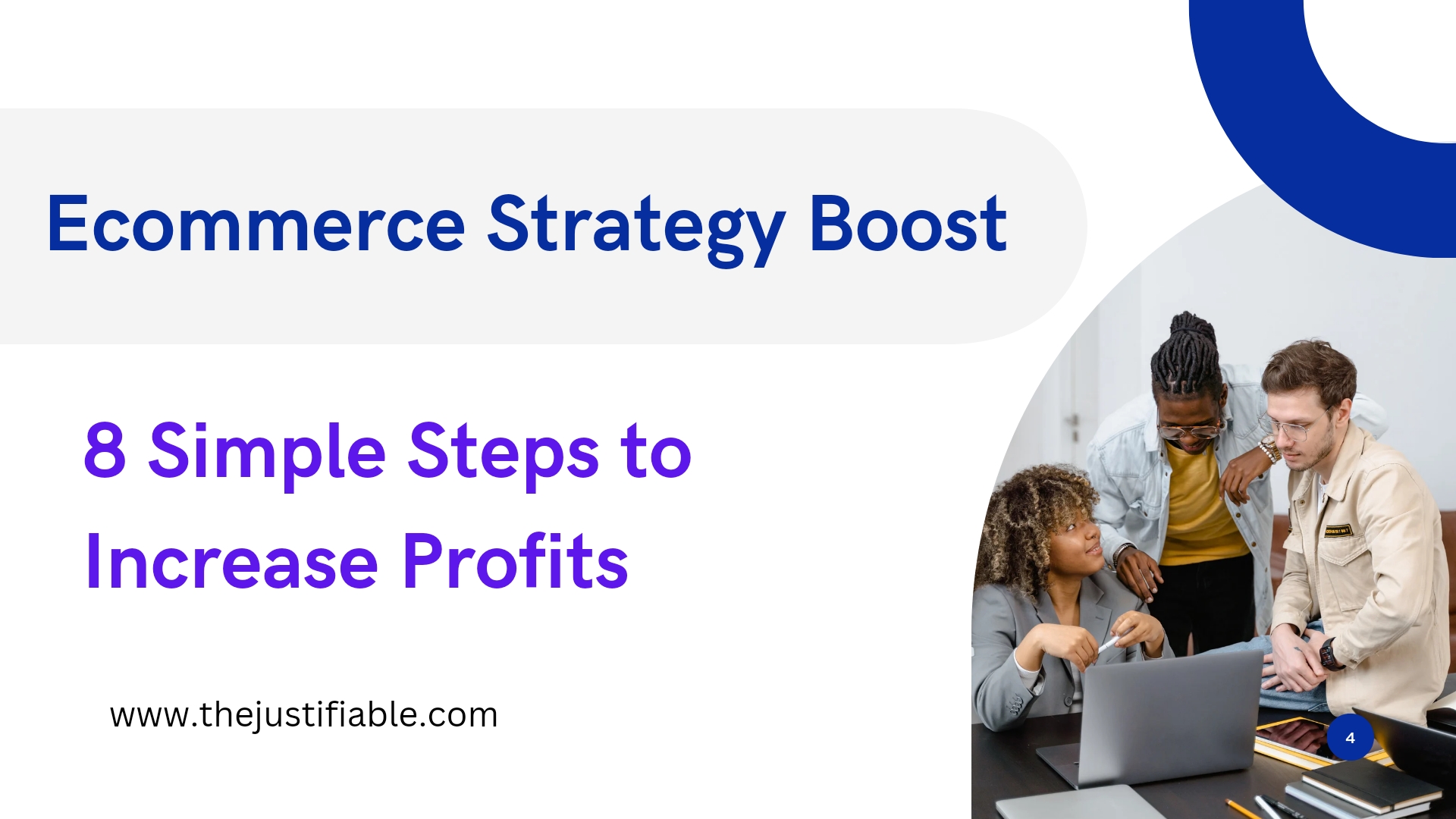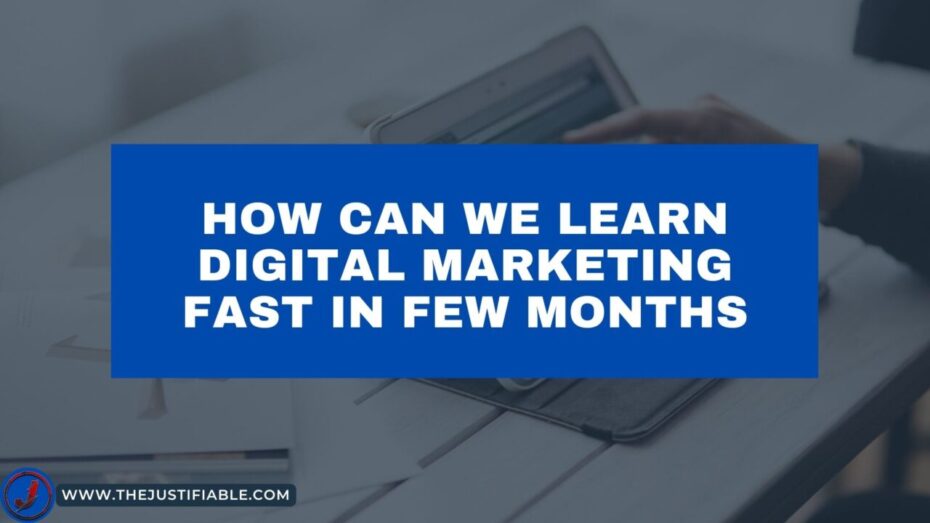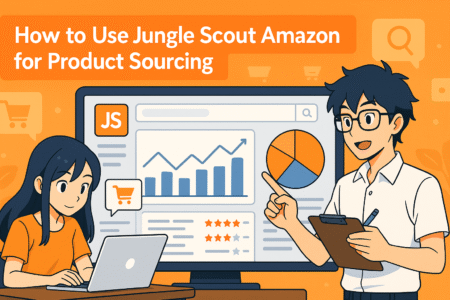Table of Contents
Are you looking for ways to enhance your ecommerce strategy and boost profits? Do you wonder how some online stores manage to stand out in the crowded digital marketplace? What if I told you that there are straightforward steps you can take to not only increase your profits but also solidify your brand’s online presence? From my perspective, initiating this journey with the right approach is crucial.
In my experience, the cornerstone of any successful online business is a robust ecommerce strategy. It seems to me that, in today’s competitive market, understanding and applying the nuances of digital commerce can significantly impact your bottom line.
I strongly believe that by adopting a comprehensive and well-thought-out plan, you can enhance user experience, optimize operations, and ultimately drive more sales. Here’s how you can start: by focusing on the essentials that make up the foundation of a powerful ecommerce presence.
My recommendation for those embarking on this journey is to remain patient and persistent. Improving your ecommerce strategy is not an overnight task; it requires dedication, analysis, and continuous refinement. From my point of view, the subsequent steps will provide you with actionable insights and proven tactics to elevate your ecommerce game.
Most importantly, these steps are designed to offer genuine value, ensuring that your efforts translate into tangible results. Let’s dive into the specifics and explore how you can leverage these insights for your business’s advantage.
Dropshipping Sites Recommendations
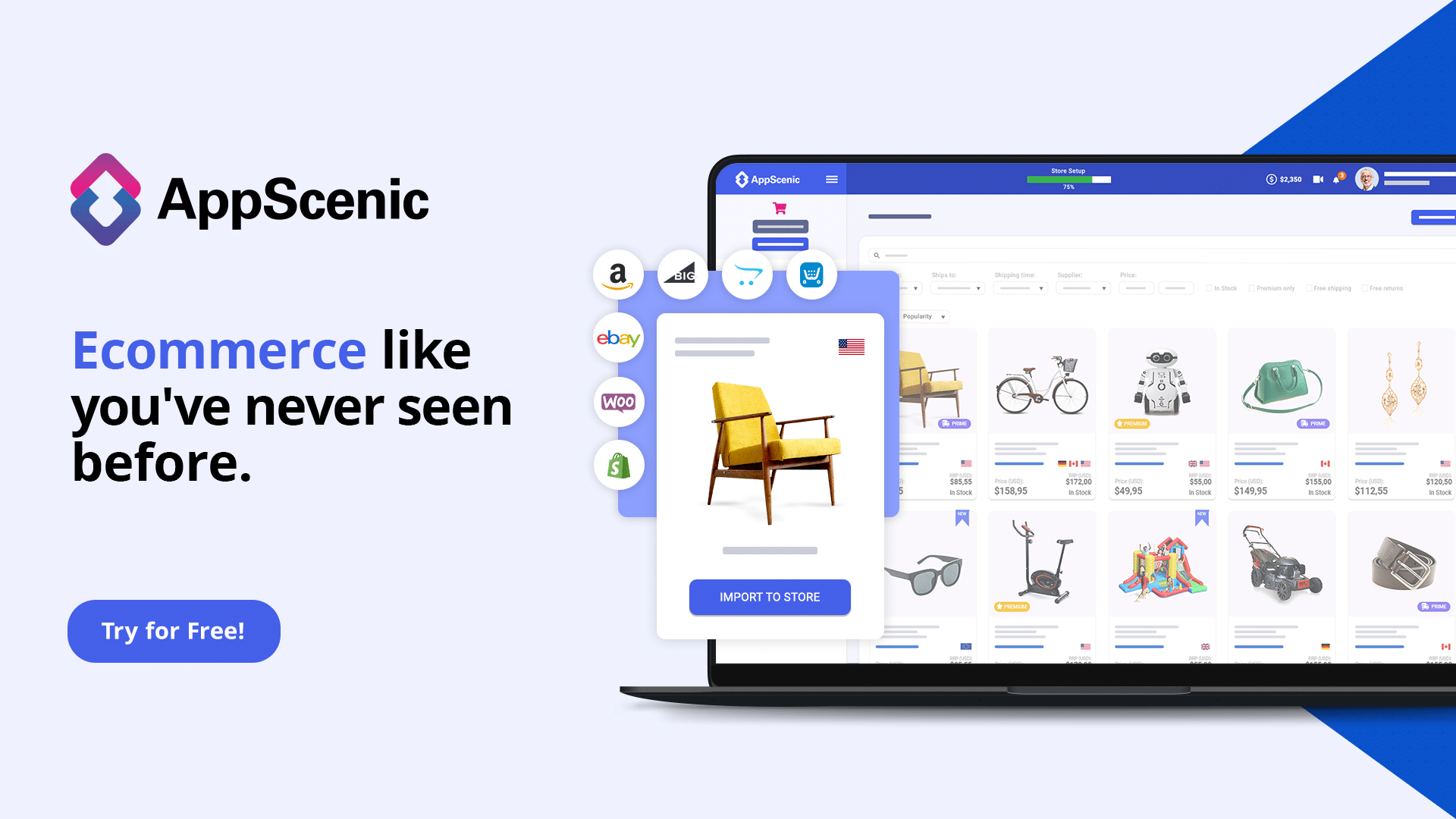 Appscenic
|  Spocket
|
1. Elevate Your Brand with a 360° Ecommerce Strategy Overhaul
Did you know that businesses with a strong omnichannel customer engagement strategy retain on average 89% of their customers compared to a 33% retention rate for those with weak omnichannel strategies? This statistic underscores the importance of a holistic ecommerce strategy in today’s digital-first marketplace. From my view, an all-encompassing approach to ecommerce is no longer optional but a necessity for brand elevation and sustained growth.
In my opinion, revamping your ecommerce strategy requires a keen understanding of your brand’s current position in the market, the latest technological advancements, and consumer behavior trends. An effective overhaul involves more than just aesthetic updates to your website; it requires a deep dive into analytics, customer journey mapping, and competitive analysis.
I suggest starting with a thorough audit of your existing operations to identify areas for improvement and innovation opportunities. This will not only enhance your brand’s visibility but also improve customer engagement and loyalty.
From my perspective, a successful ecommerce strategy overhaul is also about future-proofing your business. I recommend integrating scalable solutions and agile methodologies into your ecommerce operations. This could include adopting cutting-edge technologies like AI for personalized shopping experiences or blockchain for secure transactions.
Most importantly, ensure that your strategy is flexible enough to adapt to rapid market changes. By doing so, you position your brand as a leader in the ecommerce space, capable of meeting customer expectations and responding to new trends efficiently.
Assessing Your Current Ecommerce Footprint
Understanding where you stand in the digital landscape is crucial before embarking on any strategic overhaul. According to recent studies, nearly 50% of online businesses do not use analytics tools to their full potential, missing out on critical insights that could drive growth. From my experience, assessing your current ecommerce footprint involves a comprehensive analysis of your website’s performance, customer engagement metrics, and overall online presence.
I believe that by conducting a detailed audit of your online channels, you can uncover invaluable insights about your customer’s behavior, preferences, and pain points. This involves analyzing traffic sources, conversion rates, bounce rates, and social media engagement among others.
My suggestion is to leverage this data to pinpoint areas where your ecommerce operations can be optimized for better performance. It seems to me that understanding your digital footprint is the first step towards creating a more targeted and effective ecommerce strategy.
From my perspective, it’s also essential to assess your brand’s visibility across the web. This includes your search engine rankings, online reviews, and presence on comparison shopping engines and marketplaces. I would say that increasing your brand’s digital footprint does not just enhance visibility; it also builds credibility and trust with potential customers.
My recommendation is to use this assessment phase as a foundation for setting actionable, data-driven goals that align with your business objectives and customer needs.
Setting Clear, Data-Driven Goals
In my estimation, the foundation of any successful ecommerce strategy overhaul lies in the clarity and specificity of your goals. Surprisingly, many businesses embark on strategic updates without clear objectives, leading to wasted resources and missed opportunities.
From my view, setting clear, data-driven goals ensures that every effort is aligned with measurable outcomes, whether it’s increasing traffic, improving conversion rates, or enhancing customer satisfaction.
I recommend establishing SMART goals—Specific, Measurable, Achievable, Relevant, and Time-bound. This approach not only facilitates precise planning but also provides a benchmark for measuring success.
For instance, instead of a vague objective like “increase sales,” a SMART goal would be “increase online sales by 20% within the next 12 months through website optimization and targeted marketing campaigns.” This specificity guides your strategy and helps focus your efforts where they can have the most impact.
In my honest opinion, integrating data analytics into your goal-setting process is paramount. By leveraging data from your previous assessments, you can make informed decisions on where to allocate resources for the highest return on investment.
From my experience, businesses that adopt a data-driven approach in setting their ecommerce strategy goals are more likely to identify lucrative opportunities, anticipate market changes, and stay ahead of the competition. My suggestion is to treat this step as a critical component of your strategic overhaul, paving the way for a robust and resilient ecommerce presence.
2. Optimize Your Site for a Seamless User Experience
“Ease of use may be invisible, but its absence sure isn’t.” – IBM. This quotation beautifully captures the essence of user experience (UX) in the digital realm, especially in the context of ecommerce strategy.
In my view, optimizing your site for a seamless UX is not just about making it look good; it’s about creating an intuitive, efficient, and enjoyable journey for your customers. This approach is critical for driving conversions, reducing bounce rates, and ultimately, boosting profits.
From my perspective, the key to a seamless user experience lies in understanding your users’ needs and behaviors. This involves employing user-centered design principles that focus on usability, accessibility, and satisfaction.
I suggest conducting regular user testing and feedback sessions to gain insights into how real users interact with your site. It seems to me that implementing changes based on actual user feedback can significantly enhance the usability of your ecommerce platform, making it more intuitive and less frustrating for your customers.
Most importantly, optimizing your site for a seamless user experience requires a continuous process of testing, learning, and iterating. From my experience, even small changes can have a big impact on your site’s performance and user satisfaction.
I recommend keeping abreast of the latest UX trends and technologies to ensure your ecommerce site remains competitive and appealing to your target audience. Remember, a satisfied user is more likely to become a repeat customer, which is vital for the sustained growth of your ecommerce business.
Leveraging Speed and Design for Better Conversion
“It’s not just what it looks like and feels like. Design is how it works.” – Steve Jobs. This insight is incredibly relevant when it comes to ecommerce strategy, where the speed and design of your site directly influence conversion rates. I think that optimizing both elements not only enhances the aesthetics of your site but also its functionality, leading to a more satisfactory shopping experience for users.
In my opinion, site speed is a critical factor for keeping potential customers engaged. Studies have shown that a delay of even a second can lead to significant drops in conversions. I recommend conducting regular site speed tests and optimizing images, leveraging browser caching, and minimizing code to improve load times. It seems to me that ensuring your site loads quickly on all devices is an essential step in reducing bounce rates and increasing conversions.
Moreover, from my perspective, the design of your ecommerce site should embody simplicity, clarity, and brand consistency. My suggestion is to focus on creating a visually appealing layout that guides users intuitively through their shopping journey. This includes clear call-to-action buttons, easy navigation, and high-quality product images.
Most importantly, the design should be aligned with your brand identity to create a memorable and cohesive user experience. According to my experience, a well-designed site that loads quickly is more likely to convert visitors into customers.
Mobile Optimization: A Must-Have in Your Ecommerce Strategy
“In the digital age, mobile optimization is not a luxury, but a necessity.” In my view, this statement holds especially true for ecommerce, where a significant portion of traffic comes from mobile devices. Ensuring your site is optimized for mobile is not just about scaling down your desktop version; it’s about creating a mobile-specific experience that caters to the needs and limitations of mobile users.
From my perspective, mobile optimization includes responsive design, fast load times, and mobile-friendly navigation. I recommend prioritizing the mobile experience by simplifying designs, optimizing images, and ensuring that buttons and links are easy to interact with on a touchscreen. It seems to me that focusing on these aspects can dramatically improve the mobile shopping experience, leading to higher engagement and conversion rates.
Most importantly, considering the growing trend of mobile commerce, I believe that mobile optimization should be an integral part of your ecommerce strategy. According to my estimation, businesses that fail to provide a seamless mobile experience risk losing a significant portion of their audience to competitors.
I strongly believe that by embracing mobile optimization, you can cater to the vast and growing number of users who prefer to shop on their mobile devices, ensuring your ecommerce business stays relevant and competitive in the digital marketplace.
3. Harness the Potential of AI for Personalized Shopping
Just as a skilled salesperson in a brick-and-mortar store can enhance the shopping experience by personalizing their approach to each customer, so too can artificial intelligence (AI) transform the online shopping experience.
AI in ecommerce strategy allows for a level of personalization and customer understanding that was previously unattainable on digital platforms. By harnessing the power of AI, online retailers can offer personalized shopping experiences that not only meet but anticipate the needs of their customers.
Implementing AI into your ecommerce strategy enables a deep analysis of customer data, including browsing habits, purchase history, and preferences. This analysis can then be used to tailor the shopping experience in real-time, presenting customers with products they are more likely to be interested in.
I believe that this personalized approach not only improves customer satisfaction but also significantly increases the likelihood of conversion. It’s a win-win: customers enjoy a shopping experience that feels bespoke and intuitive, and retailers benefit from enhanced engagement and sales.
Moreover, AI’s role in ecommerce is not just about making sales; it’s about building long-term relationships with your customers. Personalized shopping experiences make customers feel valued and understood, which fosters loyalty and trust. From my perspective, the integration of AI into your ecommerce platform is an investment in customer retention as much as it is in customer acquisition.
In my opinion, retailers who are quick to adopt AI will set themselves apart in an increasingly competitive online marketplace, offering experiences that are not just transactions, but meaningful interactions.
Implementing Chatbots for 24/7 Customer Service
Imagine a world where every customer could have their questions answered instantly, no matter the time of day. This is the reality AI chatbots can provide. Implementing chatbots for 24/7 customer service in your ecommerce strategy is akin to having an ever-present sales assistant, one who is always ready to help, guide, and reassure your customers. This level of constant accessibility can significantly enhance the customer experience, reducing friction in the buying process and addressing concerns in real-time.
Chatbots powered by AI are not just responsive; they are proactive, offering help and suggestions that can guide a customer through their shopping journey seamlessly. In my view, this level of interaction is crucial for converting browsers into buyers. It’s about being there at the moment a potential customer has a question or a doubt, providing answers and solutions that can turn hesitation into a sale.
I recommend focusing on developing chatbots that can understand and process natural language effectively, ensuring interactions are as human-like as possible.
Furthermore, the data gathered by these AI chatbots can be invaluable. Every interaction offers insights into customer preferences, concerns, and behaviors. I believe that leveraging this data can help businesses continuously refine and improve their customer service strategies.
In my estimation, chatbots represent not just a tool for customer service but a dynamic resource for gathering customer insights and enhancing the overall shopping experience.
Custom Recommendations to Boost Average Order Value
The power of AI to analyze vast amounts of data can also be leveraged to make custom recommendations, a strategy that can significantly increase the average order value. Just as a knowledgeable shop assistant might suggest additional items based on what a customer is purchasing, AI can provide personalized recommendations that complement a customer’s current selection or previous purchases. This tailored approach encourages customers to discover products they may not have found on their own, increasing both the value and the volume of their purchase.
Custom recommendations do more than just upsell; they provide a service by curating the vast array of options to present those most relevant to the shopper. In my experience, customers appreciate this level of personalization, as it saves them time and enhances their shopping experience. I recommend using AI not just to push more products, but to genuinely improve customer satisfaction by making their shopping experience more efficient and enjoyable.
Most importantly, implementing custom recommendations requires a nuanced understanding of your customers. It’s about striking the right balance between making relevant suggestions and avoiding overwhelming shoppers with too many options.
In my opinion, the key is to ensure that recommendations are based on solid data analysis and are presented at the right moment in the customer journey. According to my experience, when done correctly, personalized recommendations can transform the online shopping experience, leading to higher customer satisfaction, increased loyalty, and, ultimately, greater sales.
4. Boost Your SEO to Drive Organic Traffic
While paid advertising and social media campaigns can significantly increase website traffic, it’s hard to overstate the importance of organic search traffic. Organic traffic, driven by search engine optimization (SEO), is not just about attracting more visitors; it’s about attracting the right visitors.
In my experience, a well-optimized ecommerce site can achieve long-term growth and sustainability in a way that paid strategies cannot match. Focusing on boosting your SEO is crucial for any ecommerce strategy looking to increase visibility and drive targeted traffic without continually increasing ad spend.
To enhance your SEO effectively, it’s essential to go beyond the basics and understand the evolving nature of search algorithms. From my point of view, this means creating high-quality content that addresses the needs and questions of your target audience, optimizing site structure and speed, and ensuring your website is mobile-friendly.
I recommend conducting thorough keyword research to identify opportunities for ranking and tailoring your content to these areas. It’s not just about incorporating keywords but about understanding user intent and providing valuable answers. This approach not only improves rankings but also user experience, which in turn can lead to better conversion rates.
Moreover, building a strong backlink profile is a crucial part of boosting your SEO. Quality backlinks from reputable sites signal to search engines that your site is a credible source of information, thereby improving your rankings.
From my perspective, the best way to earn these links is through creating share-worthy content that others want to link to. I suggest focusing on content that adds genuine value, such as in-depth guides, original research, or insightful analysis. By prioritizing the quality and relevance of your content, you’ll naturally attract organic links that bolster your SEO efforts.
SEO Services Recommendations
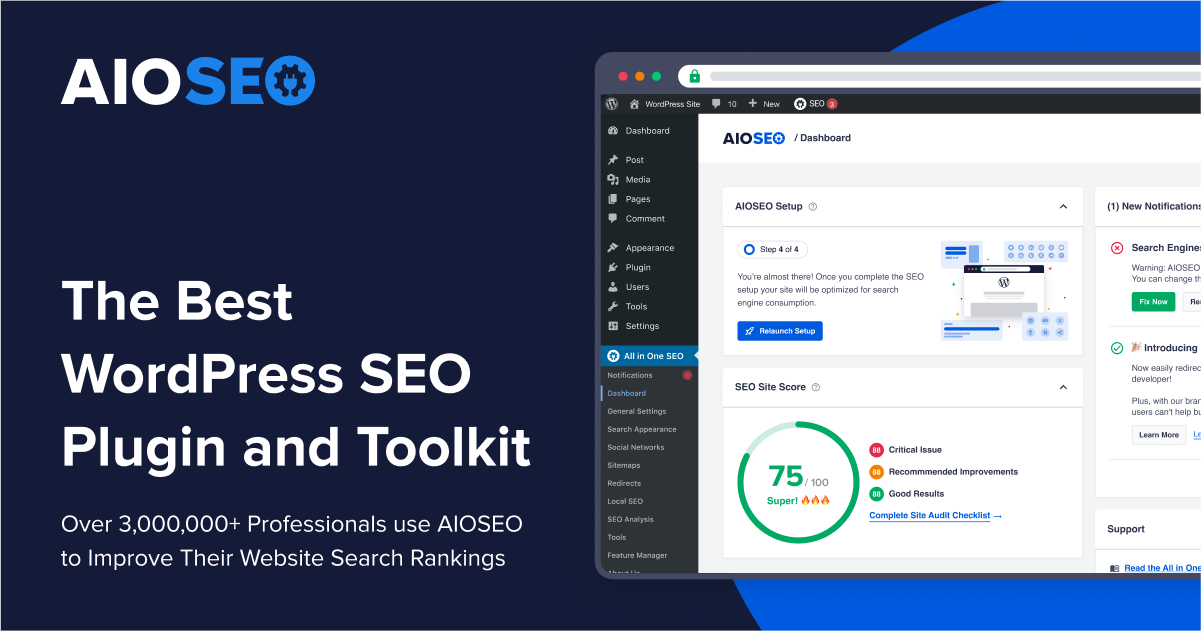 AIOSEO
| 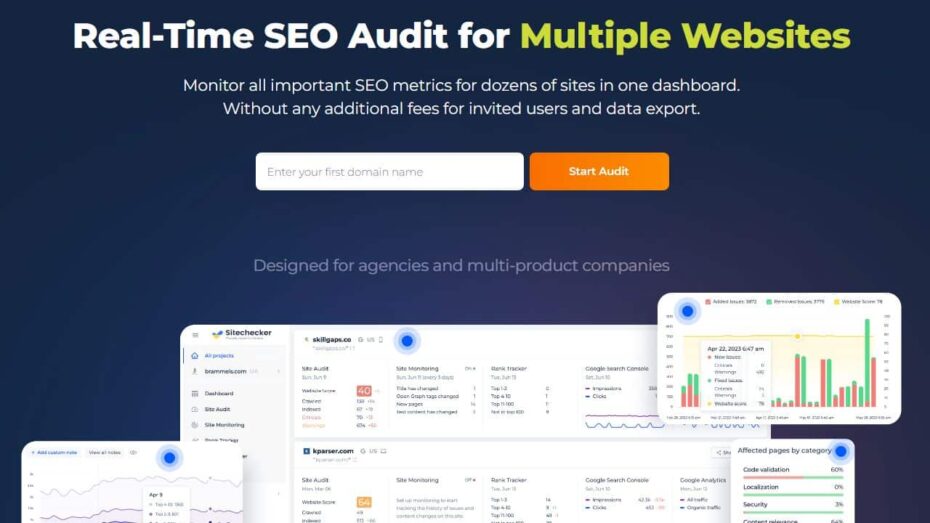 Sitechecker
|  Squirrly
|
Keyword Optimization Beyond the Basics
Effective keyword optimization is about more than just sprinkling relevant terms throughout your content. In my view, it involves a strategic approach that aligns with how your target audience searches for products or information online. This means understanding not only the keywords themselves but also the context in which they’re used.
I recommend going beyond basic keyword research to analyze search intent, which can provide deeper insights into what users are looking for and how you can cater to their needs.
Long-tail keywords, which are more specific and often longer queries, can be particularly valuable for ecommerce sites. In my experience, these keywords typically have lower search volume but higher conversion rates because they cater to users with more specific intents.
I suggest focusing part of your SEO strategy on optimizing for long-tail keywords. This involves creating content that answers specific questions or solves particular problems, which can drive targeted traffic to your site.
Moreover, it’s important to incorporate keywords naturally into your content. Keyword stuffing, or overusing keywords in an attempt to manipulate rankings, can have a negative impact on your SEO and user experience.
I believe that creating content that reads naturally and provides value to your audience is the key to successful keyword optimization. According to best practices, your primary focus should be on delivering valuable information, with keywords integrated in a way that enhances the content’s relevance and readability.
Crafting Content That Ranks and Converts
Creating content that ranks well in search engines and converts readers into customers is the holy grail of ecommerce SEO. In my opinion, the content that achieves these goals does so because it is highly relevant, informative, and engaging. It’s not enough for content to simply contain the right keywords; it must address the needs and interests of your audience in a meaningful way.
I recommend focusing on developing comprehensive, high-quality content that solves problems, answers questions, and provides unique insights.
To craft content that ranks, it’s essential to stay up-to-date with the latest SEO trends and algorithm updates. This includes optimizing for featured snippets, understanding the importance of E-A-T (Expertise, Authoritativeness, Trustworthiness), and making your content accessible and engaging. From my perspective, investing in content that offers depth and value is more likely to earn shares, backlinks, and high rankings.
Most importantly, converting readers into customers requires a clear call to action (CTA). Each piece of content should guide the reader toward the next step, whether it’s making a purchase, signing up for a newsletter, or another conversion goal. In my view, content that converts seamlessly blends informative or entertaining material with strategic CTAs, creating a natural pathway for the reader to follow.
By aligning your content strategy with SEO best practices and your audience’s needs, you can drive organic traffic that not only lands on your site but engages and converts.
5. Master Social Media to Engage and Convert
It may come as a surprise, but as of last year, the average person spent nearly 2.5 hours on social media platforms every day. This staggering statistic underscores the monumental role that social media plays in our daily lives and, by extension, its potential as a crucial tool in any ecommerce strategy. Mastering social media is not just about posting regularly; it’s about crafting a strategy that engages with your audience on a personal level, fosters meaningful interactions, and ultimately drives conversions.
To effectively engage and convert on social media, it’s essential to understand the unique culture and norms of each platform. This means creating content that resonates with the specific audience you’re targeting, whether it’s through inspiring images on Instagram, informative videos on YouTube, or engaging tweets on Twitter.
I recommend adopting a platform-specific approach to ensure your message is not just seen but heard. It’s about sparking conversations and building a community around your brand. In my opinion, the brands that succeed on social media are those that listen to their audience and create content that adds value to their followers’ lives.
Moreover, social media is an invaluable tool for gathering insights into your customer’s preferences and behaviors. By monitoring engagement, analyzing comments, and keeping tabs on trending topics, you can glean valuable data that informs your overall ecommerce strategy.
I believe that social media, when used effectively, can be a powerful channel for driving brand awareness, nurturing customer relationships, and ultimately, boosting online sales. From my perspective, the key to mastering social media lies in being authentic, responsive, and consistently providing value to your audience.
Influencer Collaborations: Numbers Don’t Lie
In the world of social media, influencers have emerged as powerful allies for brands looking to extend their reach and credibility. The reason behind this is simple: people trust people. Studies have shown that consumers are more likely to purchase a product recommended by a non-celebrity blogger than a celebrity.
This indicates a shift towards valuing genuine, trustworthy endorsements. Influencer collaborations offer an authentic way to connect with potential customers through individuals they already know, like, and trust.
I recommend carefully selecting influencers whose values align with your brand and whose followers represent your target audience. This strategic alignment is crucial for the success of influencer partnerships. It’s not just about the number of followers an influencer has, but about the engagement and trust they command.
I believe that when done right, influencer collaborations can significantly enhance brand visibility, credibility, and ultimately, conversion rates. The key is to foster genuine partnerships that bring mutual benefits to both the brand and the influencer, creating campaigns that resonate with their audience.
Furthermore, tracking the performance of influencer campaigns is essential for understanding their impact on your ecommerce strategy. By monitoring metrics such as engagement rates, traffic referrals, and conversion rates, you can gauge the effectiveness of these collaborations.
I would say that this data not only helps in optimizing current campaigns but also in planning future strategies. According to my experience, influencer collaborations, when integrated thoughtfully into your social media strategy, can be a game-changer in driving engagement and conversions.
Creating Share-Worthy Content
The essence of viral marketing lies in creating content that people feel compelled to share. This is no small feat, but when achieved, it can exponentially increase your brand’s exposure and engagement. Share-worthy content often strikes an emotional chord, provides immense value, or entertains in a way that users can’t help but want to spread the word.
I suggest focusing on originality and relevance to your target audience as key factors in crafting content that resonates and inspires sharing.
In my view, understanding your audience is paramount in creating content that is likely to be shared. This involves diving deep into the interests, needs, and preferences of your followers, and then delivering content that speaks directly to those aspects. It could be anything from a highly informative infographic that simplifies a complex topic, a heartwarming story that connects with your audience on an emotional level, or an interactive quiz that entertains while subtly promoting your brand. I recommend always asking, “Would I share this if I saw it online?” as a litmus test for share-worthiness.
Most importantly, encouraging engagement with your content can significantly boost its shareability. This means inviting your audience to comment, share their opinions, and even contribute content of their own. From my perspective, social media is a two-way conversation, and fostering an active and engaged community around your brand can lead to organic growth through shares.
In my experience, share-worthy content not only increases your brand’s reach but also strengthens your relationship with your audience, creating loyal brand advocates.
6. Enhance Customer Trust with Stellar Reviews and Testimonials
“Feedback is the breakfast of champions.” This quotation, attributed to Ken Blanchard, speaks volumes about the importance of customer feedback, especially in the form of reviews and testimonials, for any ecommerce business. In a digital landscape where trust is paramount, showcasing genuine customer experiences can significantly enhance credibility and build trust with potential customers. Stellar reviews and testimonials not only serve as social proof but also influence purchasing decisions, making them a crucial element of your ecommerce strategy.
To leverage the power of customer feedback, it’s essential to encourage your customers to share their experiences. However, this requires more than just asking for reviews; it involves creating a seamless and hassle-free process for customers to leave feedback. I suggest automating the review request process by sending follow-up emails after a purchase, making it as easy as possible for customers to express their opinions.
This approach demonstrates that you value their feedback and are committed to continuous improvement. Moreover, responding to reviews, whether positive or negative, shows that you’re engaged and attentive to customer needs, further enhancing trust.
Additionally, incorporating a diverse range of reviews and testimonials on your website and across your marketing materials can significantly impact your brand’s perception. From my perspective, featuring real stories from satisfied customers can humanize your brand and make it more relatable. It’s crucial to present these testimonials in an authentic and transparent manner.
I recommend using a variety of formats, such as written reviews, video testimonials, and case studies, to cater to different preferences and provide a comprehensive view of your customers’ experiences. This diversity not only enriches the content but also broadens its appeal, making it more likely to resonate with a wide audience.
Strategies for Accumulating Genuine Reviews
Collecting genuine reviews is an art that, when mastered, can significantly enhance your ecommerce strategy. A common misconception is that customers will naturally leave reviews without prompting. However, in my experience, even satisfied customers often need a gentle nudge.
I recommend implementing a systematic approach to request reviews, such as automated emails or messages that are triggered after a purchase. Timing is crucial; asking too soon or too late can affect the response rate. Aim for a sweet spot where the customer has had enough time to experience the product but the purchase is still fresh in their mind.
Another strategy to encourage reviews is to offer incentives. This doesn’t necessarily mean payment or discounts for positive reviews, which can come off as insincere and even unethical. Instead, consider offering entry into a giveaway or a small discount on future purchases as a thank you for providing feedback.
It’s important, however, to emphasize that you’re seeking honest feedback, regardless of whether it’s positive or negative. In my opinion, authenticity in reviews is far more valuable than unearned praise, as it builds trust and provides valuable insights for improvement.
Moreover, making the review process as simple and straightforward as possible is key to accumulating more feedback. Many customers shy away from leaving reviews because they perceive the process to be cumbersome or time-consuming. I suggest offering multiple channels for feedback, including direct emails, review sections on your product pages, and even social media platforms.
Ensuring that customers can leave reviews effortlessly, on the platform of their choice, can significantly increase your chances of receiving valuable feedback. From my perspective, simplifying the review process respects your customers’ time and shows that you genuinely care about their opinions.
Showcasing Success Stories for Credibility Boost
Success stories and detailed case studies are powerful tools that can significantly boost your brand’s credibility. They go beyond simple reviews by providing in-depth insights into how your product or service has made a tangible difference in a customer’s life or business. I strongly believe that showcasing these stories on your website and marketing materials can create an emotional connection with potential customers, demonstrating the real-world value of your offerings.
Creating compelling success stories involves selecting examples that are relatable to your target audience. This means choosing stories that reflect common challenges or aspirations among your customers.
I recommend conducting interviews with customers who have experienced significant benefits from your products or services, focusing on the specific problems they faced and how your offerings provided a solution. This approach not only highlights the effectiveness of your products but also demonstrates empathy and understanding of your customers’ needs.
Moreover, presenting these success stories in a visually engaging manner can further enhance their impact. Whether it’s through high-quality video testimonials, detailed blog posts, or visually appealing infographics, the format should captivate your audience and convey the message clearly.
I believe that investing in professional production and storytelling can significantly elevate the perceived value of your success stories, making them more persuasive and memorable. From my perspective, success stories are not just marketing tools; they are proof of your commitment to delivering value and enhancing customer satisfaction, thereby boosting your brand’s credibility and trustworthiness.
7. Smart Inventory Management to Avoid Stock Issues
Just as a captain needs a reliable compass to navigate treacherous waters, so does an ecommerce business require smart inventory management to avoid the pitfalls of stock issues. Effective inventory management is akin to this indispensable navigational tool, guiding businesses away from the dangers of overstocking or stockouts, which can significantly impact customer satisfaction and financial health.
In the realm of ecommerce, where consumer expectations for prompt delivery are higher than ever, mastering inventory management is not just beneficial—it’s essential for sustaining growth and profitability.
Implementing smart inventory management strategies means leveraging technology to forecast demand accurately, optimize stock levels, and streamline the ordering process. I suggest utilizing inventory management software that integrates with your ecommerce platform to provide real-time visibility into stock levels across all sales channels.
This holistic view enables you to make informed decisions quickly, reducing the risk of stockouts or excess inventory. From my perspective, the ability to adapt to changing demand dynamically is a crucial advantage in today’s fast-paced market.
Moreover, effective inventory management involves regular analysis and adjustment based on sales data and market trends. I recommend setting up automated reordering points for each product, ensuring that new stock is ordered before reaching critically low levels.
This proactive approach not only helps in maintaining optimal inventory levels but also minimizes storage costs by avoiding overstocking. Most importantly, by ensuring that popular items are always available, you can enhance customer satisfaction and loyalty, which are key drivers of ecommerce success.
Predictive Analysis for Efficient Stocking
In the age of big data, predictive analysis has emerged as a game-changer for inventory management, offering a glimpse into the future based on historical data and trends. This approach allows ecommerce businesses to forecast demand with remarkable accuracy, ensuring that they are always a step ahead.
By analyzing patterns in sales data, seasonal fluctuations, and market trends, predictive analysis provides actionable insights that can significantly improve stocking decisions. I believe that embracing this technology can transform inventory management from a reactive task into a strategic advantage.
To leverage predictive analysis effectively, I suggest integrating it into your inventory management system. This integration allows for the automation of complex calculations and the generation of precise demand forecasts. From my view, the key to successful predictive analysis lies in the quality and granularity of the data analyzed.
Therefore, it’s essential to collect and input detailed sales data, including promotional activities, seasonality, and external factors that could influence demand. In my estimation, businesses that invest in predictive analysis capabilities can significantly reduce the risk of stockouts and overstocking, optimizing inventory levels for efficiency and profitability.
Leveraging Data for Smarter Purchasing Decisions
Data is the lifeblood of smart inventory management, empowering businesses to make informed purchasing decisions that align with consumer demand and market conditions. By harnessing the power of data analytics, ecommerce businesses can identify trends, anticipate changes in consumer behavior, and adjust their purchasing strategies accordingly.
I recommend developing a data-driven purchasing plan that takes into account not only sales forecasts but also supplier lead times, product lifecycle stages, and inventory turnover rates. This comprehensive approach ensures that purchasing decisions are both strategic and responsive to the evolving market landscape.
Furthermore, leveraging data extends beyond internal sales analytics to include external market research and competitive analysis. Understanding the broader market context can provide valuable insights into emerging trends, potential supply chain disruptions, and opportunities for product diversification. From my perspective, businesses that are adept at integrating both internal and external data into their purchasing decisions can better navigate the complexities of ecommerce, maintaining a competitive edge.
Most importantly, data-driven inventory management fosters a culture of continuous improvement. I strongly believe that by regularly reviewing and adjusting inventory strategies based on data analysis, ecommerce businesses can refine their operations, reduce waste, and improve customer satisfaction.
In my view, the ability to adapt quickly to changes in demand, supply chain dynamics, and market trends is critical for long-term success in the ecommerce space. Leveraging data for smarter purchasing decisions is not just a tactical move; it’s a strategic imperative for any business aiming to thrive in today’s digital marketplace.
8. Analyze and Adapt: The Cycle of Ecommerce Growth
In the dynamic world of ecommerce, the mantra for sustained growth is not just to set up and sell but to analyze and adapt. This approach is akin to sailing in open waters where constant adjustments to the sail (your strategies) are vital based on the wind’s direction (market trends) and the sea’s state (consumer behavior). In essence, ecommerce success is a continuous cycle of analyzing performance, understanding market dynamics, and adapting strategies to align with these insights. This process is crucial for staying relevant, competitive, and on a trajectory of growth.
The first step in this cycle is the relentless analysis of your ecommerce activities. From sales data, website traffic, and conversion rates to customer engagement metrics on social media, every piece of data offers insights into your business’s performance and your customers’ preferences.
I suggest using advanced analytics tools that provide a comprehensive overview of your ecommerce health. This constant monitoring allows you to pinpoint what’s working and what isn’t. In my opinion, the ability to quickly understand these metrics gives you a significant advantage in making informed decisions that can propel your business forward.
Adaptation, the subsequent step, involves implementing changes based on your analysis. This could mean tweaking your marketing strategies, optimizing your website for better user experience, or even expanding your product line to meet customer demand. The key here is agility—the faster you can adapt, the better you can meet your customers’ evolving needs.
I recommend adopting a test-and-learn approach where you pilot small changes, measure their impact, and scale successful initiatives. This iterative process ensures that your ecommerce strategy is always evolving, improving, and aligned with your growth objectives.
Tools for Tracking Success in Real-Time
In today’s fast-paced ecommerce environment, having the right tools to track your success in real-time is not just beneficial; it’s essential. Real-time analytics tools can provide immediate feedback on the effectiveness of your strategies, enabling you to make swift adjustments. Whether it’s monitoring website traffic after launching a new marketing campaign or tracking sales during a promotional event, these tools offer the insights needed to gauge your initiatives’ success.
I suggest integrating a dashboard that consolidates data from various sources—your website, social media platforms, and sales channels. This centralization makes it easier to monitor key performance indicators (KPIs) and identify trends at a glance.
In my experience, tools like Google Analytics for web traffic, Hootsuite for social media engagement, and Shopify Analytics for sales performance are invaluable for ecommerce businesses. These platforms not only track success but also highlight areas for improvement, guiding your decision-making process.
Furthermore, utilizing predictive analytics can be a game-changer. These tools analyze current and historical data to forecast future trends, helping you to stay one step ahead. For instance, they can predict peak shopping periods, allowing you to stock up in advance. I believe that leveraging these tools effectively can significantly enhance your ability to make data-driven decisions, optimizing your strategies for better outcomes.
Using Customer Feedback to Refine Your Strategy
The voice of your customer is arguably the most valuable feedback you can receive. It provides direct insights into what your customers appreciate and what areas need improvement. Encouraging and facilitating customer feedback through surveys, reviews, and social media can uncover priceless information that can be used to refine your ecommerce strategy.
Actively listening to your customers and implementing changes based on their feedback demonstrates that you value their input, fostering a sense of community and loyalty. I recommend creating a structured approach to collecting, analyzing, and acting on customer feedback.
This might include regular review of product reviews, monitoring social media mentions, and conducting customer satisfaction surveys. By making this an integral part of your strategy, you can ensure your offerings resonate with your target audience.
Moreover, customer feedback can also lead to innovation. It can inspire new product ideas, highlight opportunities for service improvement, and even guide your content strategy. In my opinion, integrating customer feedback into your business operations is not just about fixing issues but about seizing opportunities to innovate and differentiate your brand.
I strongly believe that businesses that excel in listening to and acting on their customers’ feedback are more likely to achieve sustainable growth and success in the competitive ecommerce landscape.
Conclusion: Future-Proofing Your Ecommerce Strategy
In the rapidly evolving landscape of online retail, staying ahead requires not just adaptability but a forward-thinking approach. Future-proofing your ecommerce strategy is akin to setting the sails for uncharted waters, prepared for both the storms and the clear skies. It demands an understanding that what works today may not work tomorrow, and the willingness to evolve continuously. This journey of growth and adaptation is not a straightforward path but a cycle of constant learning, analysis, and refinement.
Most importantly, the key to a resilient ecommerce strategy lies in staying customer-focused. In my opinion, as long as your strategies are aligned with delivering value and enhancing the customer experience, you’ll remain on the right track.
I recommend keeping a close eye on emerging trends, technologies, and consumer behaviors. This proactive stance allows you to anticipate changes and pivot your strategies accordingly. It’s not just about reacting to the market but predicting and shaping future trends.
Furthermore, embracing innovation is crucial for staying competitive. I believe that investing in new technologies, exploring new marketing channels, and constantly seeking ways to improve operational efficiency are vital components of a sustainable ecommerce strategy.
It seems to me that the ecommerce businesses that thrive are those that are not afraid to experiment, learn from their failures, and celebrate their successes. From my perspective, the future belongs to those who are agile, data-driven, and customer-centric in their approach.
Frequently Asked Questions (FAQ)
What is an eCommerce strategy?
An eCommerce strategy is a comprehensive plan that outlines how a business will operate online to achieve its sales and marketing goals. This includes decisions related to target audience, product selection, sales channels, customer experience, marketing tactics, and logistics. The goal is to create a seamless and efficient process that drives traffic, converts visitors into customers, and maximizes revenue.
Why is an eCommerce strategy important for online businesses?
An eCommerce strategy is crucial because it helps businesses stay competitive in the crowded online market. It ensures that all aspects of the online business, from website design to marketing, are aligned with the overall business goals. A well-defined strategy improves customer acquisition, retention, and satisfaction by providing a clear roadmap for decision-making and resource allocation.
How can I improve my eCommerce website’s conversion rate?
Improving your website’s conversion rate involves optimizing various elements of the customer journey. Key strategies include streamlining the checkout process, ensuring fast load times, offering multiple payment options, and providing clear and compelling calls-to-action. Additionally, leveraging social proof, such as customer reviews and testimonials, can significantly boost trust and conversions.
What role does SEO play in an eCommerce strategy?
Search Engine Optimization (SEO) is critical in driving organic traffic to your eCommerce site. By optimizing product descriptions, meta tags, and content with relevant keywords, your site can rank higher on search engines, making it easier for potential customers to find you. Effective SEO also involves improving site speed, mobile-friendliness, and building high-quality backlinks.
How do I choose the right eCommerce platform for my business?
Choosing the right eCommerce platform depends on your business size, budget, and specific needs. Key considerations include the platform’s ease of use, scalability, customization options, integration capabilities, and customer support. Popular platforms like Shopify, BigCommerce, and Magento each have their own strengths, so it’s important to evaluate which one aligns best with your business goals.
What are the latest trends in eCommerce that I should be aware of?
Some of the latest trends in eCommerce include the rise of omnichannel retail, where businesses integrate multiple sales channels for a unified shopping experience. Additionally, personalization, AR/VR technology for product visualization, and AI-driven analytics for better decision-making are increasingly shaping the eCommerce landscape. Staying updated on these trends can give your business a competitive edge.
How important is mobile optimization for eCommerce?
Mobile optimization is essential as a significant portion of online shopping is done via mobile devices. Ensuring that your website is mobile-friendly means optimizing for fast load times, easy navigation, and a seamless checkout process on smaller screens. A well-optimized mobile experience can lead to higher engagement and conversion rates.
What are the common challenges in scaling an eCommerce business?
Scaling an eCommerce business involves challenges such as managing increased inventory, ensuring logistics and fulfillment efficiency, and maintaining a consistent customer experience across all channels. It also requires robust data management systems to handle customer data and make informed decisions for continued growth.
How can I reduce shopping cart abandonment on my eCommerce site?
Reducing shopping cart abandonment can be achieved by simplifying the checkout process, offering guest checkout options, providing multiple payment methods, and ensuring transparency about shipping costs early in the process. Sending cart abandonment emails with incentives like discounts can also encourage customers to complete their purchase.
What are the best practices for managing customer data in eCommerce?
Managing customer data effectively involves implementing strong data security measures, such as SSL encryption, and complying with privacy regulations like GDPR. Businesses should also focus on leveraging first-party data to personalize customer experiences while ensuring that data is used responsibly and ethically.


